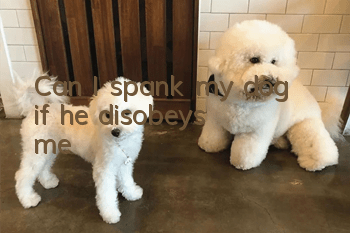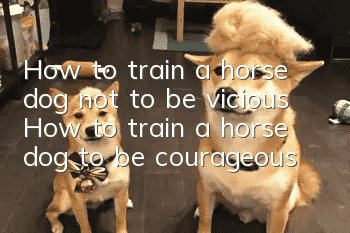Can I spank my dog if he disobeys me?

Many dog lovers have this worry: My dog is very disobedient, chews things randomly, eats secretly...Should I beat it? Will beating it change the dog's problems? Will spanking Bad dogs... there are many questions. Today, the editor will tell you. Can you beat a dog if it disobeys? What should you do if your dog disobeys?
First of all, don’t hit your dog. That will only make it afraid of you and alienate you, which will create obstacles for training it in the future. You'd better train it patiently.
The basic methods of dog training include reward, punishment, induction, and coercion.
1. Rewards are a favorite training method for dogs. Reward measures can strengthen the dog's correct actions, consolidate the developed abilities, and adjust the dog's neural activity state. Generally speaking, it is best to use food encouragement as little as possible, because often giving food rewards to dogs can easily lead to greedy and food-stealing problems. You can use verbal praise or touch the back of the ears, the nape of the neck, the top of the head or the bottom of the neck. The effect of spiritual rewards is actually no worse than that of material rewards. In addition, it is not appropriate to reward an action before it is completely completed. After you are extremely proficient in a certain action, you must examine its comprehensive application ability. You should not reward insignificant links. It is best to wait until the entire action is completed continuously before giving rewards. , that is, the transition from individual rewards to comprehensive rewards. In this way, the dog can be careful in completing the next series of actions, instead of just focusing on one or two actions.
2. Punishment is an effective means to stop the bad behavior of dogs. When using this method, the trainer must have a serious attitude and a high-pitched and sharp tone. Severe punishments include pointing at the dog and scolding it, and throwing books at the dog's side. Of course, this is not a real beating. The main purpose is to give the dog a threatening posture and stimulate its nerves. Let it remember this lesson and never do it again.
3. Induction refers to the use of delicious food, objects, trainer's actions, etc. to induce the dog to perform certain actions, thereby establishing a conditioned reflex. For example, if you want the dog to learn to correctly grasp the command "come", the trainer can tease him with a snack in front of him, and the dog will definitely "come" obediently. At this time, he must not reward the dog with snacks. Dog, then it will misunderstand your "come" as "eat". Repeat this many times, and the dog will understand that the so-called "coming" is a process of walking to the owner from far to near. No need for snacks, and after training a few times, the dog will definitely understand your "come" command accurately.
4. Force refers to a method that uses mechanical stimulation and deterrent commands to force the dog to successfully complete a certain action. The so-called mechanical stimulation refers to behaviors such as pulling the traction rope, pressing, tapping and tapping. For example, trainingThe trainer lifts the dog's collar with his right hand and presses the dog's waist with his left hand, and the dog will inevitably sit down. Coercive methods are more direct than induction methods and are less likely to cause misunderstandings, allowing the dog to understand the meaning of the command while being forced to obey. This method is a bit simple and crude, and does not take into account the dog's voluntariness. But sometimes, it is generally said that reprimanding has made the dog feel accustomed and commonplace, and it does not care about the so-called sincere inducement. At this time, the completion of some actions and the change of the dog's behavioral habits must be carried out by coercive means.
For example, when some dogs bully small animals at home, and when it is no longer effective to scold them loudly, you can give them strong stimulation to force them to make corrections. This is a relatively extreme form of coercion and punishment, but it is often One of the effective measures. Generally speaking, the intensity of coercion should not be excessive, and strong stimulation should only be given when necessary. The intensity should not be too high in the early stages of training, and should be used with caution on timid dogs.
- Reasons why dogs hiccup and vomit
- Symptoms and prevention of roundworms in dogs
- How should dogs be cared for from pregnancy to delivery?
- What are the symptoms of Pomeranian distemper?
- How effective is nebulization for dog bronchitis?
- Is it okay for dogs to drink ZEAL pet milk?
- What will happen if a dog eats durian core?
- What should I do if my dog accidentally licked toilet water? Is it okay?
- canine distemper virus
- Should dogs drink cold water or warm water in winter?



